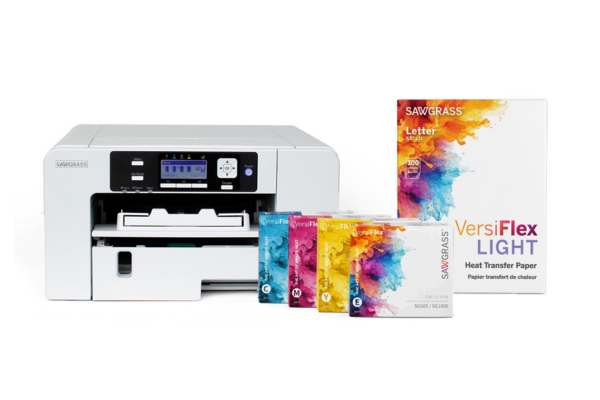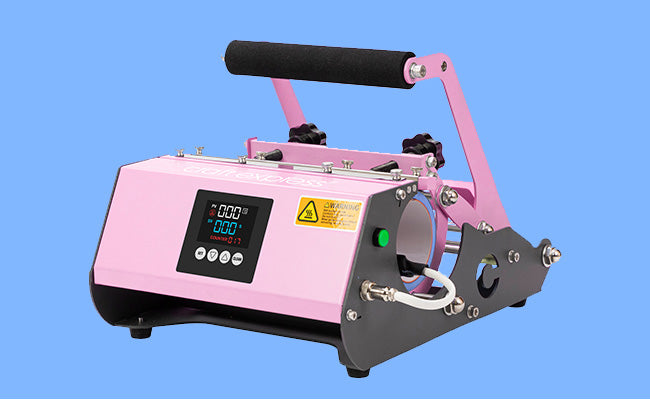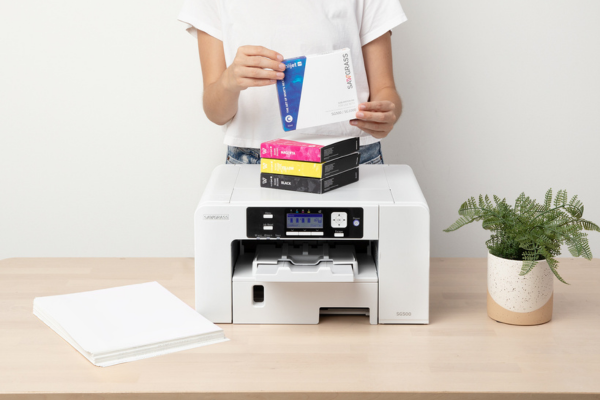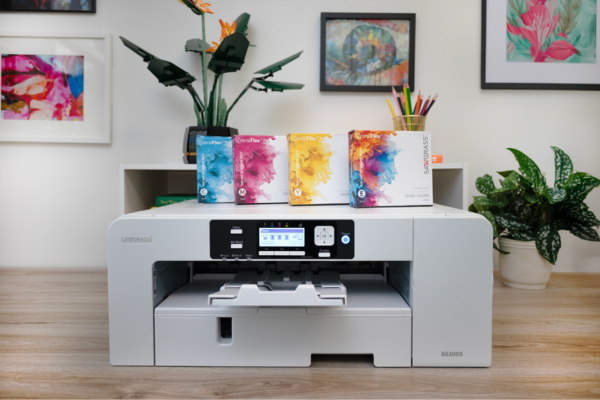
Can any printer do sublimation?
Short answer, no. Not every printer can do sublimation. You need a printer that is built for sublimation ink or a compatible inkjet that is dedicated to sublimation from day one. Regular home or office printers are made for dye or pigment ink on paper, not for gas dye that bonds to polyester or a polymer coated blank. A true setup also uses sublimation paper, a heat press, and blanks made for sublimation. If your goal is permanent full color designs on mugs, tumblers, and light polyester shirts, choose a sublimation ready printer and the right tools for the job.
Sublimation printers vs regular printers
A sublimation printer lays down special dye that turns into gas under heat. After printing on sublimation paper, you press the design onto polyester or a coated hard good. The color moves into the surface, then locks in as it cools. A regular printer puts water based dye or pigment on paper, and the ink dries on top of the sheet. That makes great documents and photos, but it will not bond to a mug or fabric the way sublimation does.
Key takeaways
-
Sublimation uses special dye and paper, then heat and pressure to transfer color into the item.
-
Regular printers are not designed for sublimation dye, so prints will not transfer or will look dull and wash out.
-
To get reliable results, use a printer that is intended for sublimation, and dedicate it to sublimation only.
What makes a printer a sublimation printer
A printer that works for sublimation has three essentials:
-
Ink compatibility
It is designed to run true sublimation ink. This ink behaves differently than everyday dye or pigment. It must flow, dry, and jet cleanly, and it must turn into gas under heat without clogging or cooking inside the printer. -
Workflow and support
Sublimation models and bundles come with profiles, setup guides, and maintenance routines that match sublimation ink and paper. That saves time and helps beginners get consistent color. -
A dedicated path
Once sublimation ink is installed, the printer should stay a sublimation printer. Mixing inks or switching back and forth risks clogs, stains, and color shifts.
Printers that do not work for sublimation
-
Laser printers
They fuse toner onto paper with heat. There is no dye to turn into gas, so transfers will not work. -
Thermal label printers and mobile receipt printers
These react to heat sensitive paper. They do not print with liquid ink at all. -
Photo printers that use dye film for snapshots
These are called dye sub in the photo world, but they are closed systems for photo paper, not for heat transfer onto blanks. -
Inkjet printers that have already run regular ink
Once a printer has been filled with standard ink, it is risky to convert. Residual ink and old settings can contaminate lines and cause poor transfers.
When a conversion can work, and when it should not
Some new inkjet models can be dedicated to sublimation from the first fill. That means brand new, never used with regular ink, and set up only with sublimation ink and paper. This approach takes more tinkering and color testing. For most beginners, a purpose built sublimation model is the smoother path. It gives you matched ink, profiles, and a simpler setup so you can focus on pressing clean transfers, not on diagnosing clogs.
What you need besides the printer
Even the best printer will not transfer color by itself. Plan for these basics.
-
Sublimation paper that fits your printer and ink
-
A heat press sized for your projects, for example a flat press for shirts and coasters or a mug and tumbler press for drinkware
-
Sublimation ready blanks made of polyester or coated for sublimation
-
Heat resistant tape and protective paper to keep prints from shifting and to protect your press
-
A simple press log so you can repeat the settings that work
Always follow the instructions for your exact paper, blanks, and press. Time, temperature, and pressure will vary by item.
Quick decision guide
Use this table to choose your path in seconds.
|
Your situation |
Best choice |
Why |
|---|---|---|
|
You want to customize mugs and light polyester shirts |
Buy a sublimation ready printer |
Built for sublimation ink and profiles, faster to success |
|
You only need to print on paper |
Use a regular printer |
Designed for documents and photos on paper |
|
You have a used inkjet and hope to switch |
Do not convert |
Old ink can contaminate lines and cause clogs and color issues |
|
You want bold prints on black cotton |
Use another method, for example DTF |
Sublimation needs light polyester to stay bright |
|
You enjoy tinkering and color testing |
A brand new inkjet dedicated to sublimation can work |
Only if it has never seen regular ink and you are ready to test and profile |
How to tell if your current printer is a bad fit
-
You see the word laser in the specs or it uses toner.
-
It uses heat sensitive paper instead of liquid ink.
-
It has already printed with regular dye or pigment inks.
-
The maker does not support sublimation ink or paper in the instructions.
If any of these match, keep that printer for paper and pick a proper sublimation model for crafting.
Tips to get a clean start with sublimation
-
Choose white or very light blanks for true color.
-
Tape your transfer so it cannot slide during pressing.
-
Pre press fabric for a few seconds to remove moisture.
-
Change protective paper every press to avoid stray marks.
-
Test small, then save your winning settings as presets.
FAQ
Can I use my regular inkjet with sublimation paper
No. Regular ink will not sublimate. You need sublimation ink in a dedicated printer and sublimation paper.
Can I swap between regular ink and sublimation ink
Do not swap. Once sublimation ink is in the printer, keep it there. Mixing inks can clog lines and shift color.
Does a sublimation printer also print on plain paper
You can print test pages, but its purpose is to make transfers for polyester and polymer coated blanks.
Do I need white ink for sublimation
No. Sublimation does not print white. Use white or very light blanks so colors stay true.
What happens if I try to sublimate with the wrong printer
Transfers will be dull, may not bond, and can ruin blanks or the printer. Use tools made for sublimation to protect your gear and your results.
Internal Links
-
Craft Express sublimation printers
-
Craft Express sublimation paper
-
Craft Express auto heat presses
Closing
You do not need every printer to do sublimation, you need the right one. Start with a sublimation ready printer, a pack of sublimation paper, and a press that fits your favorite projects. Try a simple white polyester tee or a coated mug, note the settings that work, and build from there with confidence.




Leave a comment
This site is protected by hCaptcha and the hCaptcha Privacy Policy and Terms of Service apply.